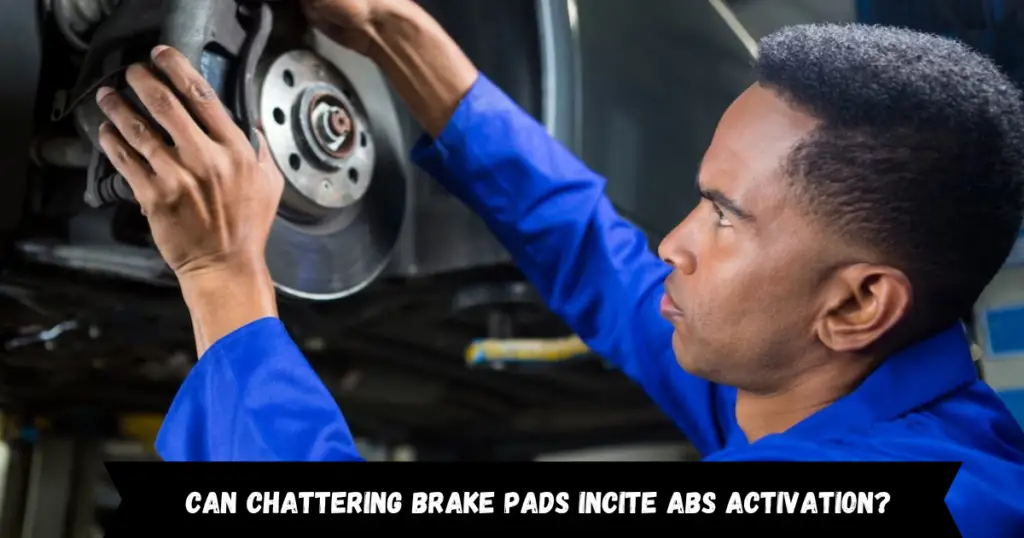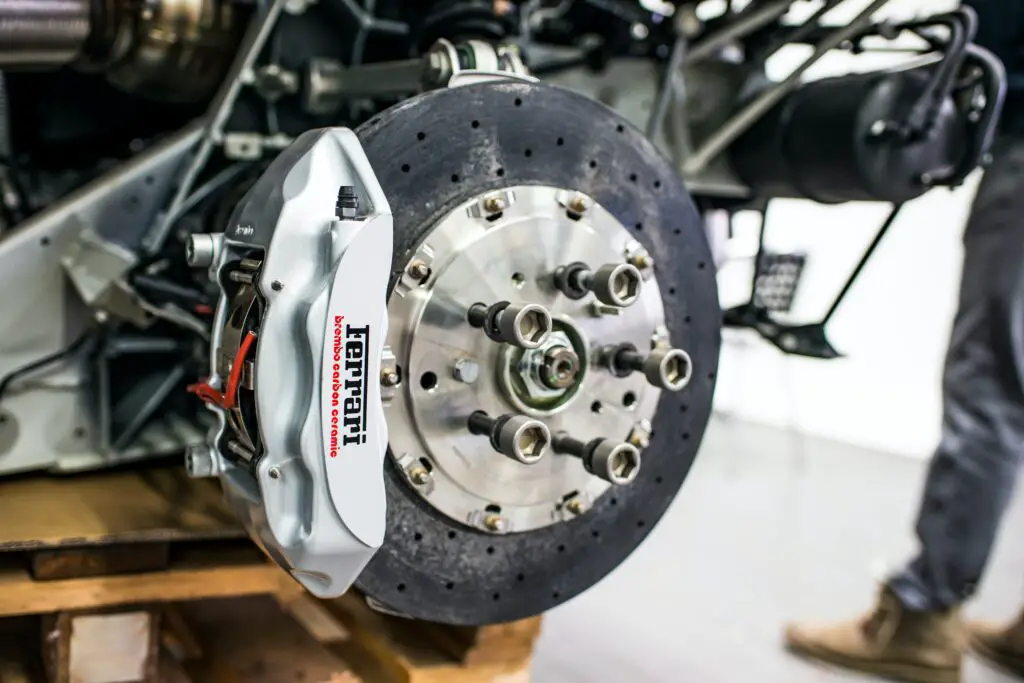That moment when your ABS light illuminates on the dashboard can trigger immediate concern. While many drivers immediately assume major system failures, the truth about ABS warnings—and their connection to brake pad wear—is more nuanced than you might think. In this comprehensive guide, we’ll explore the intricate relationship between your vehicle’s brake pads and ABS system, helping you understand when to worry and when to take action.
Understanding Your Vehicle’s ABS System
What is ABS and Why Does It Matter?
The Anti-lock Braking System (ABS) represents one of the most significant safety innovations in automotive history. Unlike traditional braking systems, ABS prevents wheel lockup during emergency braking situations, helping you maintain steering control while bringing your vehicle to a safe stop.
Key components of your ABS include:
- Wheel speed sensors on each wheel
- A hydraulic control unit
- An electronic control module
- Brake fluid supply system
Related: Car Jerks While Driving at Constant Speed
How ABS Works With Your Brake System
When you press the brake pedal hard, the ABS system:
- Monitors wheel rotation speeds
- Detects potential wheel lockup
- Modulates brake pressure automatically
- Maintains optimal braking force

The Complex Relationship Between Brake Pads and ABS
Direct vs. Indirect Effects
Here’s where things get interesting: worn brake pads don’t directly trigger the ABS light, but they can create conditions that activate the warning system. Understanding this relationship is crucial for proper vehicle maintenance.
Primary Ways Brake Pads Affect ABS:
- Brake Fluid Level Changes
- As pads wear, pistons extend further
- More brake fluid is needed to fill the gap
- Low fluid levels can trigger ABS warnings (Professional Brake Fluid Test Strips [AMAZON])
- Uneven Wear Patterns
- Creates vibration during braking
- May affect wheel speed sensor readings
- Can trigger false ABS activation (Consider adding: “Premium Brake Pad Measurement Tool” [AMAZON])
Related: What Causes Turbo Oil Leaks?
Warning Signs You Shouldn’t Ignore
Physical Indicators
- Audible Warnings:
- High-pitched squealing during braking
- Metallic grinding sounds
- Clicking or rattling noises (“Professional Brake Diagnostic Stethoscope“)
- Physical Sensations:
- Vibration in the brake pedal
- Pulsating brake pedal
- Reduced braking effectiveness
- Longer stopping distances
Dashboard Warnings
Understanding what different warning lights mean can save you time and money:
- ABS Light Only:
- Indicates ABS system issue
- Basic braking typically still works
- Requires professional diagnosis
- Brake Warning Light:
- Low brake fluid
- Parking brake engaged
- Serious brake system issue
- Both Lights Together:
- Immediate attention required
- Multiple system failures possible
- Not safe for extended driving
Professional Diagnosis Methods
Modern Diagnostic Approaches
Professional mechanics use sophisticated tools to pinpoint exact issues:
- OBD-II scanning tools
- Brake fluid analysis
- Physical component inspection
- Sensor testing procedures ( “Professional OBD2 Scanner” [AMAZON])
Related: Easy Fixes for Fast Coolant Loss
DIY Inspection Steps
For the hands-on vehicle owner, here’s what you can check:
- Visual Brake Pad Inspection:
- Look through wheel spokes
- Check for even wear
- Measure pad thickness
- Note any unusual patterns
- Rotor Condition Assessment:
- Look for scoring
- Check for warping
- Examine surface condition
- Brake Fluid Evaluation:
- Check fluid level
- Note fluid color
- Look for contamination ( “Premium Brake Fluid Test Kit” [AMAZON])
Preventive Maintenance: The Key to Avoiding ABS Issues
Essential Maintenance Schedule
Understanding when to perform brake maintenance can save you thousands in repairs:
- Regular Inspections:
- Visual checks every 3 months
- Professional inspection annually
- Fluid level checks monthly
- Brake Pad Replacement Intervals:
- Urban driving: 30,000-35,000 miles
- Highway driving: 50,000-65,000 miles
- Performance driving: 15,000-20,000 miles (“Premium Ceramic Brake Pads” [AMAZON])
Related: Headlights Randomly Turn Off While Driving
Quality Matters: Choosing the Right Components
Not all brake components are created equal. Here’s what to consider:
- Brake Pads:
- Ceramic: Best for daily driving
- Semi-metallic: Ideal for performance
- Organic: Budget-friendly option
- Brake Fluid:
- DOT 3: Standard requirement
- DOT 4: High-temperature applications
- DOT 5: Special applications (“Premium DOT 4 Brake Fluid” [AMAZON])
Cost Considerations and Value Analysis
Brake System Maintenance Costs
Breaking down the expenses helps plan for maintenance:
- Regular Maintenance:
- Brake pad replacement: $150-300
- Rotor replacement: $250-500
- Fluid change: $60-120
- Emergency Repairs:
- ABS module replacement: $1,000-2,500
- Complete system overhaul: $2,000-4,000
- Sensor replacement: $200-400
Related: Metal on Metal Sound When Reversing
Value of Preventive Maintenance
Investment in prevention typically saves money long-term:
- Regular maintenance costs: $300-500 annually
- Emergency repairs: $1,500-3,000 per incident
- Impact on vehicle resale value: Up to $1,000
Expert Tips for Maximum Brake Life
Driving Habits That Extend Brake Life
- Smooth Braking Techniques:
- Anticipate stops early
- Use engine braking
- Avoid tailgating
- Practice gradual deceleration
- Environmental Considerations:
- Avoid deep water puddles
- Clean brakes after winter driving
- Regular undercarriage washing (Consider adding: “Professional Brake Cleaner Spray” [AMAZON])
Related: Delayed Response When Pressing Accelerator
Common Mistakes to Avoid
- Installation Errors:
- Incorrect pad orientation
- Uneven torque application
- Forgotten brake hardware
- Improper bedding procedure
- Maintenance Mistakes:
- Using incorrect fluid type
- Mixing old and new fluid
- Ignoring minor symptoms
- Delaying scheduled maintenance
When to Seek Professional Help
Critical Warning Signs
Immediate professional attention needed when:
- Both ABS and Brake lights illuminate
- Grinding noises during braking
- Severe vibration in brake pedal
- Loss of braking power
- Fluid leaks
Choosing a Qualified Professional
Look for:
- ASE certification
- Specialized brake system experience
- Modern diagnostic equipment
- Positive customer reviews
- Warranty coverage
Future Maintenance Planning
Creating a Maintenance Schedule
- Track important dates:
- Last brake service
- Fluid changes
- Inspections (Consider adding: “Digital Vehicle Maintenance Log” [AMAZON])
- Monitor mileage intervals:
- Pad replacement
- Rotor inspection
- System diagnosis
Conclusion
Understanding the relationship between brake pads and your ABS system empowers you to:
- Recognize early warning signs
- Perform appropriate maintenance
- Make informed repair decisions
- Ensure maximum safety
- Optimize vehicle performance
Remember: While worn brake pads may not directly trigger your ABS light, they’re part of an interconnected system that requires regular attention and maintenance. By following this guide, you’ll be better equipped to maintain your vehicle’s braking system and ensure your safety on the road.

